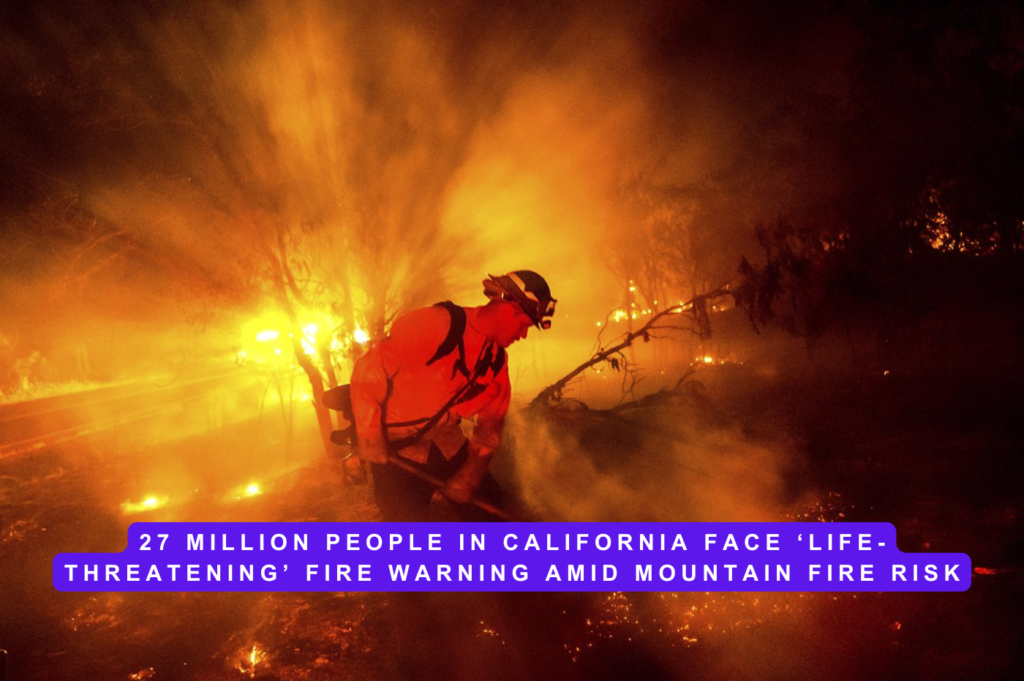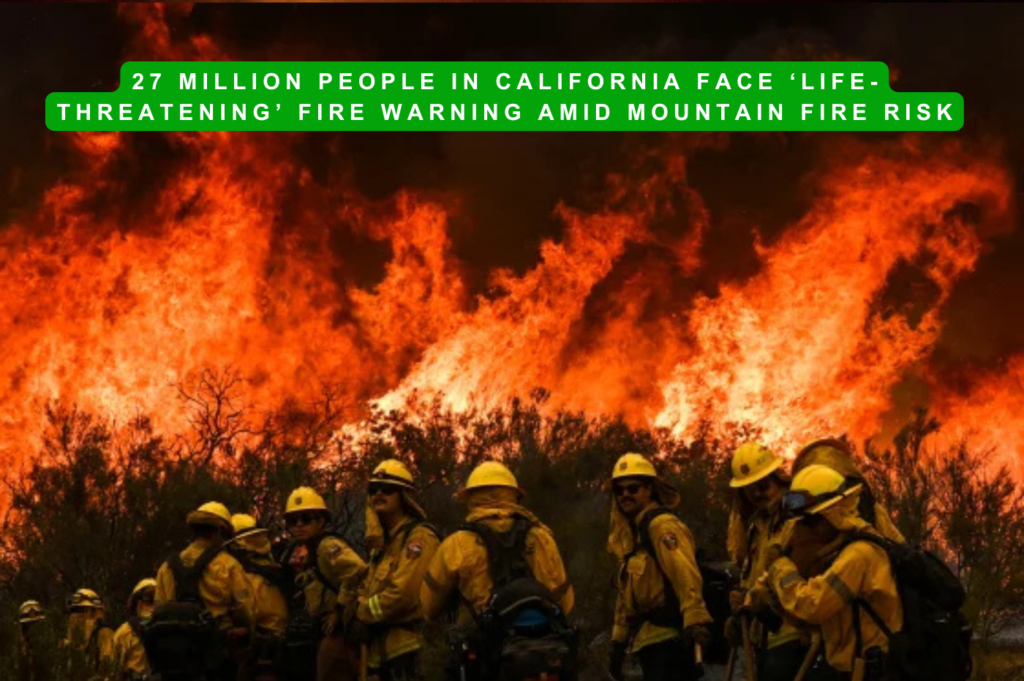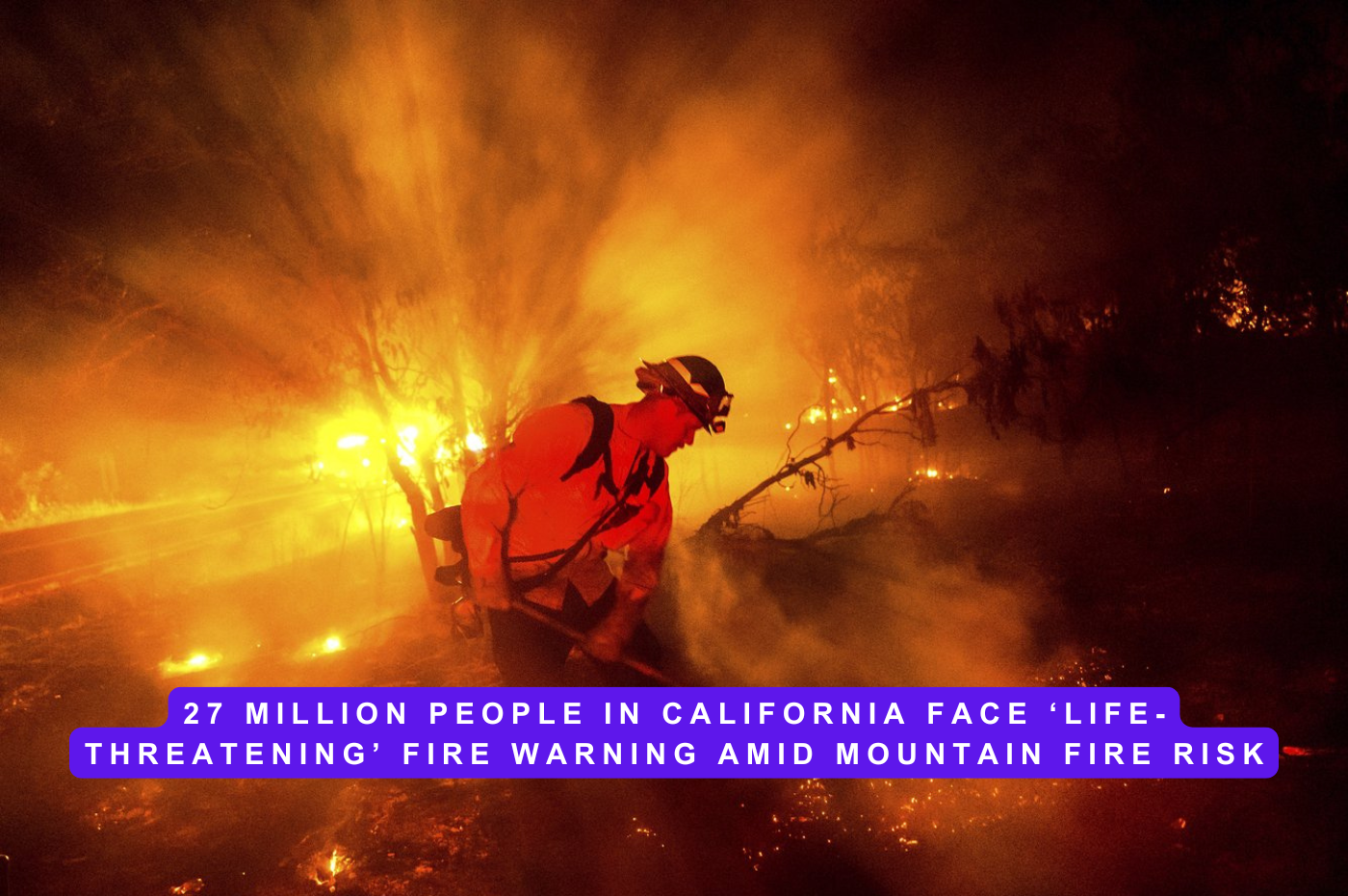27 Million People in California Face ‘Life-Threatening’ Fire Warning Amid Mountain Fire Risk

Introduction
The Mountain Fire in California has put millions on high alert, with authorities issuing life-threatening fire warnings across vast parts of the state. Over 27 million Californians are facing intense fire risk as dry winds, high temperatures, and low humidity create ideal conditions for wildfires to spread. As the state braces for potential evacuations and destruction, understanding what’s happening, why it’s dangerous, and how to stay safe is crucial.
This article covers everything you need to know about the current fire situation in California, including safety tips, wildfire impact, and steps you can take to protect your family and home. Let’s dive into the details of the Mountain Fire, what it means for Californians, and what steps you can take.
| Sr# | Headings |
|---|---|
| 1 | What is the Mountain Fire? |
| 2 | How Wildfires Start in California |
| 3 | Why 27 Million People Are at Risk |
| 4 | The Role of Weather in Fire Danger |
| 5 | Life-Threatening Fire Warnings: What They Mean |
| 6 | High-Risk Areas and Potential Impact |
| 7 | The Cost of Firefighting Efforts |
| 8 | How to Stay Informed During Fire Season |
| 9 | Protecting Your Home from Wildfires |
| 10 | Preparing for Evacuations |
| 11 | How the Mountain Fire Affects Air Quality |
| 12 | The Environmental Impact of Wildfires |
| 13 | Long-Term Effects on California’s Landscape |
| 14 | How to Help Those Affected by Wildfires |
| 15 | Key Takeaways and Final Thoughts |
What is the Mountain Fire?

The Mountain Fire is a large wildfire currently spreading across California’s forests and rural areas, bringing with it significant threats to human lives, wildlife, and property. It started in a mountainous region, hence the name, and has been fueled by extreme weather conditions that make containment challenging for firefighters.
How Wildfires Start in California
Wildfires often begin with a spark—whether from a lightning strike, a downed power line, or human activity. California’s dry seasons, combined with abundant vegetation, provide perfect fuel for fires. Imagine dry grass and trees as a matchbox ready to ignite at the smallest spark; once it does, fire spreads with alarming speed, especially in areas with strong winds.
Why 27 Million People Are at Risk
Over 27 million people in California live in areas where fire warnings have been issued, from cities to remote areas. These warnings are due to the combination of intense heat, dry vegetation, and powerful Santa Ana winds, which can carry flames over miles within minutes.
The Role of Weather in Fire Danger
Weather is a critical factor in wildfire spread. High temperatures dry out vegetation, while winds fuel flames and make them nearly impossible to control. This is particularly true in mountainous and forested regions where terrain can make access and firefighting more challenging.
Life-Threatening Fire Warnings: What They Mean
When authorities issue life-threatening fire warnings, they’re urging residents to prepare for immediate evacuation. These warnings are not just about property loss; they mean lives are in danger. Taking these warnings seriously can be the difference between staying safe and facing deadly risks.
High-Risk Areas and Potential Impact
The high-risk areas currently include densely populated cities as well as rural zones. Fire in urban areas can damage infrastructure, while rural fires can devastate forests, displacing wildlife and destroying entire communities. The cost of rebuilding and recovering from such fires can be astronomical, not to mention the emotional toll on residents.
The Cost of Firefighting Efforts
Each year, firefighting costs California billions of dollars, with thousands of firefighters working tirelessly to control the flames. The resources required include water, helicopters, trucks, and safety gear, all of which add up, especially during prolonged fire seasons like this one.
How to Stay Informed During Fire Season
Staying informed is essential for safety. Use apps like Cal Fire’s Ready for Wildfire and subscribe to local alerts. Regular updates on weather conditions, evacuation routes, and fire progress can help you make quick, informed decisions. In times of emergency, information is as critical as water for survival.
Protecting Your Home from Wildfires
Simple steps like clearing dry leaves, creating a defensible space around your property, and ensuring your home’s roof and windows are fire-resistant can make a big difference. Consider trimming trees and moving flammable items away from your house to reduce risks.
Preparing for Evacuations
Evacuating during a fire requires careful planning. Keep an emergency bag with essentials like water, food, important documents, and medication ready. Make sure each family member knows evacuation routes, and keep your car fueled and parked in an accessible spot.
How the Mountain Fire Affects Air Quality
Wildfires produce vast amounts of smoke and ash, leading to poor air quality. This can be especially harmful to people with respiratory issues. The smoke doesn’t just stay near the fire; it spreads to nearby cities, making breathing difficult and lowering visibility.
The Environmental Impact of Wildfires
Wildfires don’t just affect people; they have severe consequences for the environment. They destroy trees that help absorb carbon dioxide, contribute to soil erosion, and disrupt local ecosystems. For California, this means an even bigger challenge in its fight against climate change.
Long-Term Effects on California’s Landscape
Wildfires leave behind a scarred landscape that can take years to recover. Burned areas become prone to mudslides, as the vegetation that once held the soil in place is gone. The landscape changes profoundly, affecting everything from wildlife habitats to water quality.
How to Help Those Affected by Wildfires
If you want to support fire victims, consider donating to organizations like the American Red Cross or local shelters. Your donations can provide essentials like food, shelter, and emotional support for families who have lost everything.
Key Takeaways and Final Thoughts
The Mountain Fire in California serves as a stark reminder of the unpredictable and devastating power of nature. With millions of residents under fire warnings, the risks are high, and everyone must stay vigilant. Whether you’re directly affected or watching from afar, it’s essential to understand the causes, risks, and preventive measures to protect lives and property.
Frequently Asked Questions (FAQs)
1. How did the Mountain Fire start?
The exact cause of the Mountain Fire is under investigation, but many wildfires begin due to natural causes like lightning or human activity.
2. What areas are most at risk from the Mountain Fire?
The high-risk areas include parts of California with dense vegetation, mountainous regions, and locations with strong winds that can spread flames.
3. How can I protect my home from wildfires?
You can protect your home by creating a defensible space, clearing dry vegetation, using fire-resistant materials, and staying informed on fire conditions.
4. How does the Mountain Fire impact air quality?
The smoke from the Mountain Fire affects air quality, making it harmful to breathe, especially for people with respiratory conditions or sensitivities.
5. How can I stay updated on fire warnings?
You can stay updated by signing up for alerts from local authorities, downloading fire safety apps like Cal Fire’s Ready for Wildfire, and following reliable news sources.
In times of natural disaster, awareness and preparation are the most powerful tools at our disposal. Stay safe, stay informed, and take the necessary steps to protect yourself and your community.






